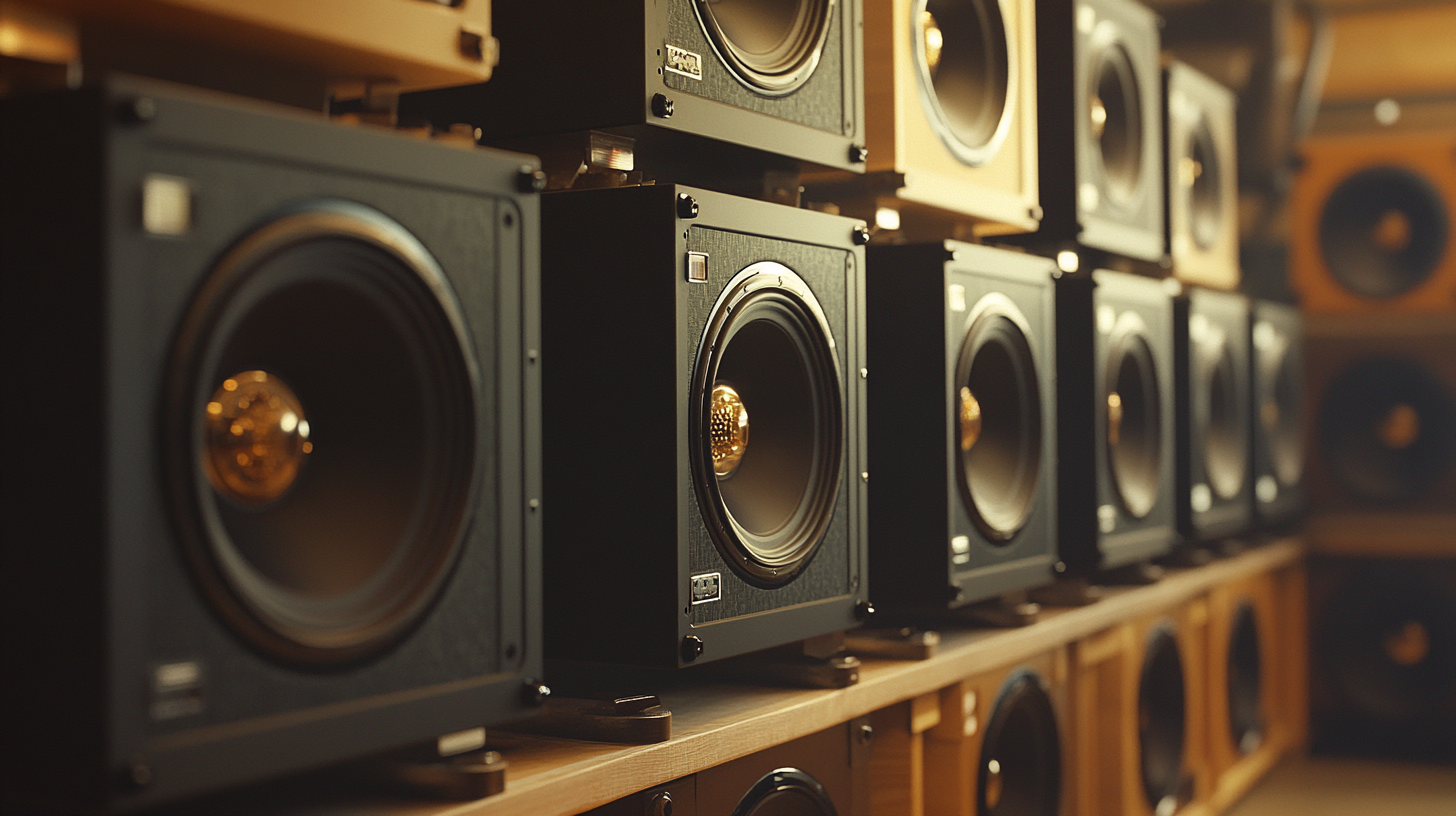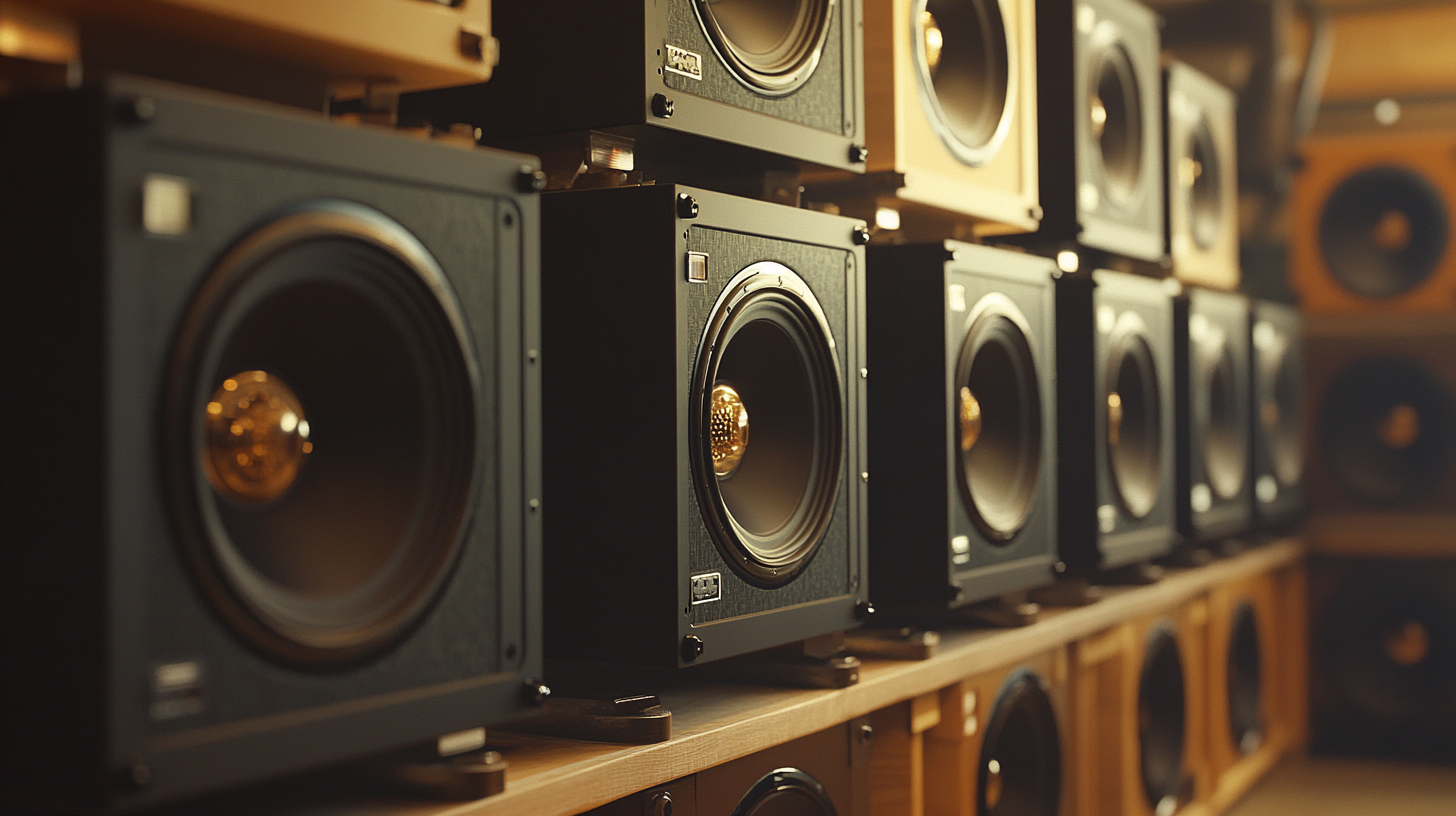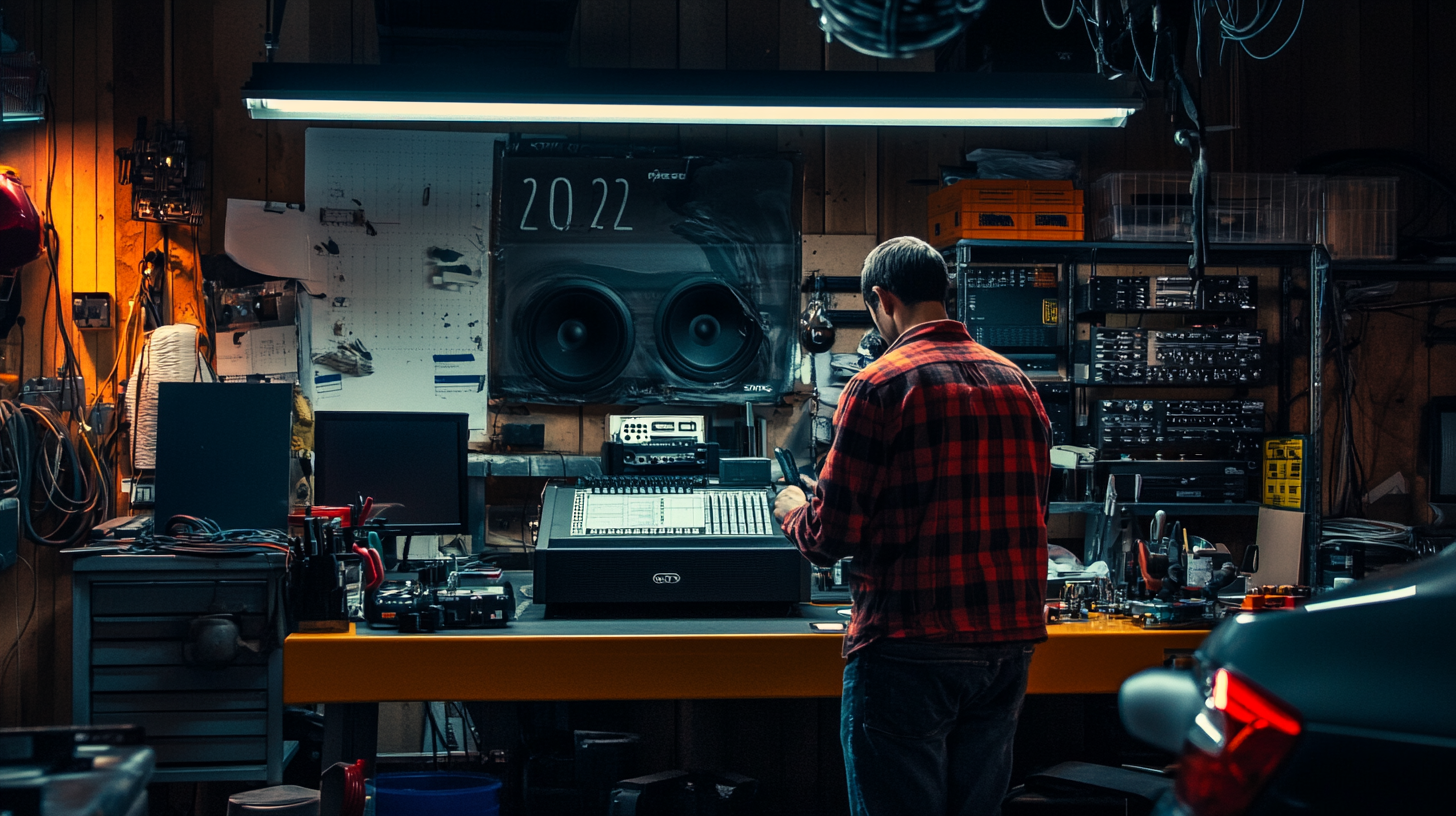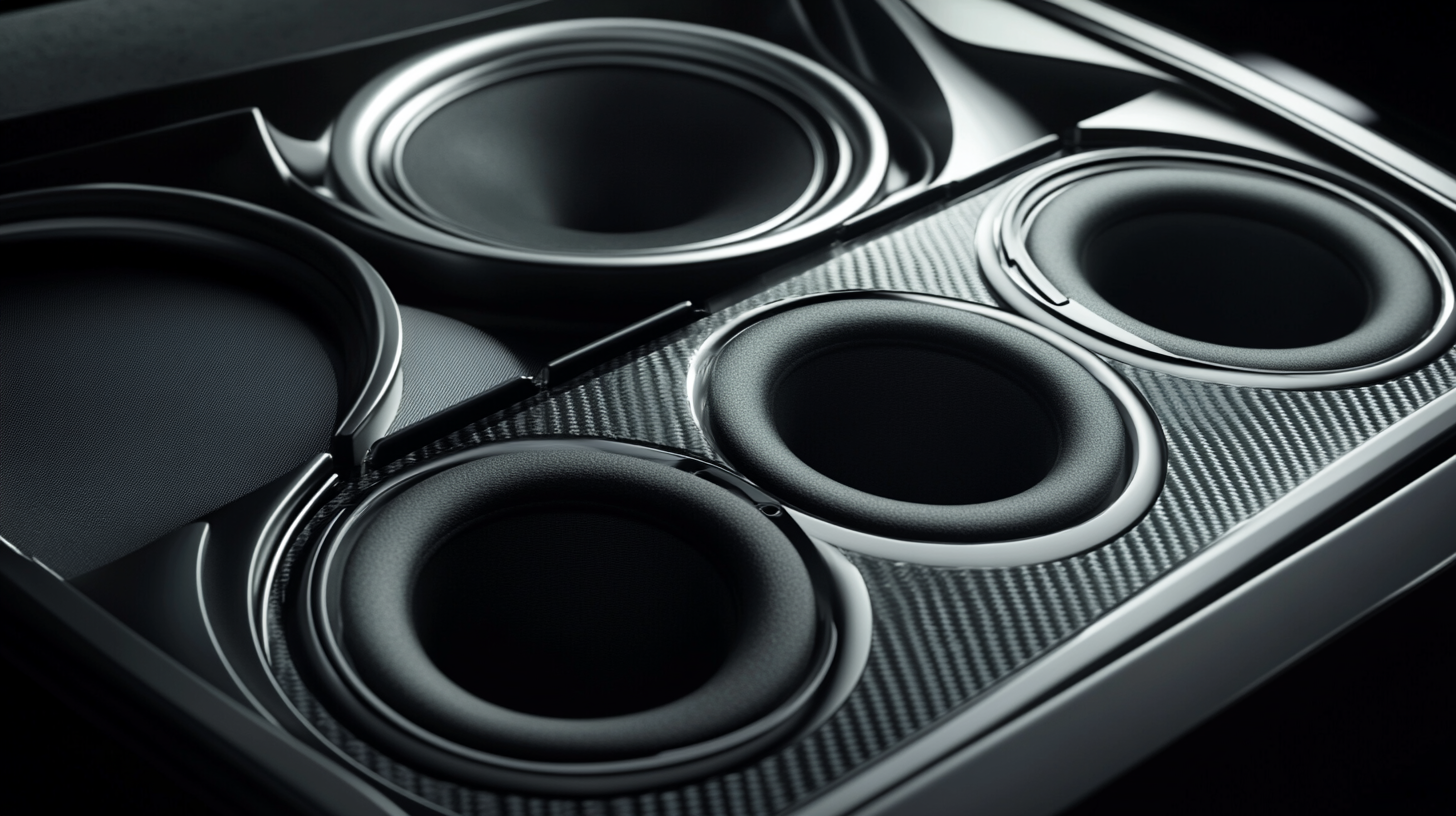Optimize Subwoofer Tuning Frequency: Expert Guide

When achieving the best sound quality in your car audio system, tuning the subwoofer enclosure is paramount. The tuning frequency of the subwoofer box plays a crucial role in enhancing the bass response and reducing distortion. Your subwoofer needs to be tuned to benefit the acoustics of its surroundings. In this blog, we will delve into the science behind subwoofer box tuning, the effect of enclosure size on tuning frequency, and the different types of subwoofer boxes and their tuning requirements, including how to determine the optimal subwoofer tuning frequency. So, let’s dive in and explore the world of tuning frequency for subwoofer enclosures.
Understanding Tuning a Subwoofer Box
The tuning frequency of a subwoofer box is the frequency at which it resonates the most. Tuning the subwoofer box optimizes the bass response of your audio system, resulting in deep, resonant bass notes that enhance the system’s overall sound quality.
Enhancing Bass Response
Fine-tuning the subwoofer box allows you to maximize the bass notes in your audio system. Adjusting the tuning frequency can optimize the bass response, ensuring the low frequencies are well-balanced and prominent. A properly tuned subwoofer box delivers deep, resonant bass that adds depth and richness to your audio experience. The crossover frequency is crucial in achieving this balance and enhancing the overall bass response.
One critical benefit of tuning a subwoofer box is reducing distortion. When the box is properly tuned to its resonant frequency, it minimizes the resonant frequency response, resulting in a cleaner bass sound. Adjusting the tuning frequency can also reduce sound pressure level variations, ensuring the bass notes sound clean and clear without distortion.
What is the Role of Resonant Frequency in Subwoofer Box Tuning?
The resonant frequency, also known as the tuning frequency, is the frequency at which the subwoofer box resonates the most. It determines the box’s bass response, and by adjusting the resonant frequency, you can achieve the desired sound quality.
When the subwoofer box is tuned to the resonant frequency, it allows it to vibrate in sync with the audio signal, resulting in enhanced bass response. By fine-tuning the resonant frequency to 30hz, you can ensure that the subwoofer box resonates at the frequencies that best complement the audio system, delivering a well-balanced mix of bass frequencies. This is especially important for subwoofers in ported boxes, as the air flowing out of the gap enhances the frequency and can increase the amount of hertz produced.

Enclosure Size vs Tuning Frequency
The size of the subwoofer box has a significant impact on the tuning frequency range. Smaller subwoofer boxes require higher tuning frequencies, while larger ones allow lower tuning frequencies.
The net volume of the enclosure, which is the box’s volume, including the volume displaced by the subwoofer and port, determines the tuning frequency range. By optimizing the tuning frequency based on the enclosure size, you can achieve the best bass response for your audio system.
How to Tune Your Subwoofer Box
Now that we understand the importance of tuning frequency, including the subwoofer tuning frequency, let’s explore how to tune your subwoofer box for optimal sound quality. Decoupling the subwoofer box from the enclosure is crucial to achieve accurate tuning. This can be done using isolation pads or other methods to prevent sound system vibrations from interfering with the tuning process. Decoupling the subwoofer box ensures the tuning frequency response is clean and free from resonance interference, resulting in accurate tuning.
Adjust the Resonant Frequency
To tune the subwoofer box, you need to determine its resonant frequency. You can measure its frequency response using audio measurement tools or an online calculator explicitly designed for subwoofer tuning.
Once the resonant frequency, also known as the resonance frequency, is determined, you can adjust the best tuning frequency by changing the subwoofer box design, port length, and volume of the enclosure or adjusting the predicted resonance (fb) value. Fine-tuning the resonant frequency allows you to achieve the desired sound quality, ensuring that the subwoofer box resonates at the frequencies that best complement your audio system. By using the equation provided to calculate the desired tuning frequency in hz for your subwoofer enclosure specs, you can accurately adjust the predicted resonance for optimal performance.

The Importance of Port Size and Subwoofer Tuning Frequency
When tuning your subwoofer box, the vent port size and the subwoofer cone are critical factors that directly influence your audio system’s performance. An appropriate vent port size enhances airflow, allowing the subwoofer to resonate more effectively, contributing to a fuller and more impactful bass response. It’s essential to consider both the vent port area and length when setting up your enclosure. A larger port area typically lowers the tuning frequency, resulting in deeper bass notes, while a more minor port increases the tuning frequency for a tighter bass response. Therefore, ensuring that the port size aligns with your desired subwoofer tuning frequency is crucial for meeting your tuning requirements and optimizing the overall sound quality of your audio system.
How to Tune a Speaker Box
Sealed box subwoofer boxes, or sealed enclosures, provide a tight and accurate bass response. To achieve optimal sound quality, the tuning frequency of these boxes should be carefully considered.
Tuning Sealed Subwoofer Boxes
Sealed box subwoofer boxes, or sealed enclosures, provide a tight and accurate bass response. To achieve optimal sound quality, the tuning frequency of these boxes should be carefully considered.
The tuning frequency of sealed subwoofer boxes affects the bass response, and finding the ideal tuning frequency allows the low frequencies to be enhanced, resulting in a well-balanced sound mix. You can fine-tune the box for maximum resonance and sound pressure level by exploring the resonant frequency of sealed subwoofer boxes. The tuning frequency is crucial for achieving the best SPL tuning for ported boxes. To get a good mix of SQ and SPL with a ported box, you must tune between 30 Hz and 35 Hz, considering the appropriate port size. Remember that for SPL (sound pressure level), you must always tune high; for SQ (sound quality), a low tune is required.
Tuning Ported Subwoofer Boxes
Ported subwoofer boxes, or vented enclosures, enhance low-frequency response and increase overall loudness. The tuning frequency of ported subwoofer boxes determines the volume of low frequencies produced by the box.
Tuning the ported subwoofer box to the desired frequency range is essential to optimize the sound system. By adjusting these parameters, you can achieve the desired tuning frequency by tuning the ported subwoofer box, resulting in the best mix of bass frequencies and enhanced resonance.

Several factors come into play when tuning a subwoofer box and loudspeaker systems, and understanding these tuning parameters can help you achieve the best possible sound. The enclosure’s volume is particularly significant; a larger enclosure generally allows for lower tuning frequencies, while smaller enclosures require higher tuning frequencies. Additionally, the materials and construction of the box can influence the resonance and overall sound quality. By carefully considering these tuning parameters, you can effectively optimize your subwoofer box for improved audio performance, ensuring that it meets your specific requirements and delivers the bass response you desire.
Frequently Asked Questions
How do I tune my subwoofer for optimal sound?
To tune your subwoofer for the best sound quality, start by adjusting the tuning frequency of your subwoofer box. This involves optimizing the resonant frequency to ensure your subwoofer vibrates with the audio signal, enhancing the bass response. For accurate tuning, decouple the subwoofer box from its enclosure using isolation methods to prevent interference from sound system vibrations. Determine the resonant frequency using audio measurement tools or an online calculator, then adjust the subwoofer box design, port length, and volume as necessary. Fine-tuning the resonant frequency will help you achieve a well-balanced mix of bass frequencies, delivering deep and resonant bass that enhances your audio experience.
What does tuning a subwoofer box entail?
Tuning a subwoofer box entails adjusting the box’s resonant frequency to optimize the bass response of your audio system. This process allows the subwoofer to resonate at frequencies that complement the rest of your audio system, resulting in deep, resonant bass notes. Proper tuning involves considering the size of the subwoofer box, as this affects the tuning frequency range. Smaller boxes may require higher tuning frequencies, while larger ones can accommodate lower frequencies. You can minimize distortion and ensure the bass notes sound clean and clear by fine-tuning the resonant frequency.
How can I maximize the sound output from my subwoofer?
Maximizing the sound output from your subwoofer involves fine-tuning the subwoofer box to optimize the bass response. Adjust the tuning frequency to ensure low frequencies are well-balanced and prominent in your audio system. A properly tuned subwoofer box should deliver deep, resonant bass that adds depth and richness to your audio experience. Ensure the tuning frequency is adjusted to reduce sound pressure level variations, minimize distortion, and enhance the clarity of bass notes.
How is deep bass achieved in a subwoofer system?
Achieving deep bass in a subwoofer system involves tuning the subwoofer box to resonate at the optimal frequencies for bass reproduction. Adjusting the resonant frequency can enhance the bass response, allowing the subwoofer to produce deep, resonant bass notes. The tuning process includes considering the size of the subwoofer box and adjusting the tuning frequency accordingly. A well-tuned subwoofer box, especially in ported designs, can leverage the airflow through the port to further enhance the depth and resonance of the bass produced.
Which type of subwoofer box should I choose for the best sound quality?
Choosing the right type of subwoofer box for the best sound quality depends on your specific sound preferences and the characteristics of your audio system. Sealed subwoofer boxes offer a tight and accurate bass response, ideal for those seeking precision in their sound. Ported subwoofer boxes, on the other hand, enhance low-frequency response and overall loudness, suitable for listeners who prefer a more resonant bass. When selecting a subwoofer box, consider the tuning requirements of each type and how they align with your desired sound quality.
Mistakes to Avoid in Subwoofer Box Tuning?
When tuning your subwoofer box, you must be aware of common mistakes that can hinder sound quality. One frequent error is neglecting to choose the appropriate tuning frequency for your setup, leading to a poorly tuned subwoofer failing to deliver the desired bass response. Additionally, incorrectly calculating the port size can result in distortion, negatively impacting sound quality. Ensuring that your subwoofer is adequately tuned is vital for achieving optimal sound quality and a satisfying bass response. By avoiding these common pitfalls, you can enhance your audio experience and enjoy the deep, resonant bass your system can produce.
In conclusion, tuning your subwoofer enclosure is crucial for achieving optimal bass response and reducing distortion. Understanding the science behind subwoofer box tuning, including the role of resonant frequency and the effect of enclosure size on subwoofer tuning frequency, will help you make informed decisions. When tuning your subwoofer box, decoupling the sub and adjusting the resonant frequency are essential steps.
Different subwoofer boxes, such as sealed and ported, have specific tuning requirements. Ultimately, whether a higher or lower tuning frequency is better for your subwoofer depends on your personal preferences and the specific characteristics of your audio system. For more detailed information on this topic, check out our blog on subwoofer box tuning.
